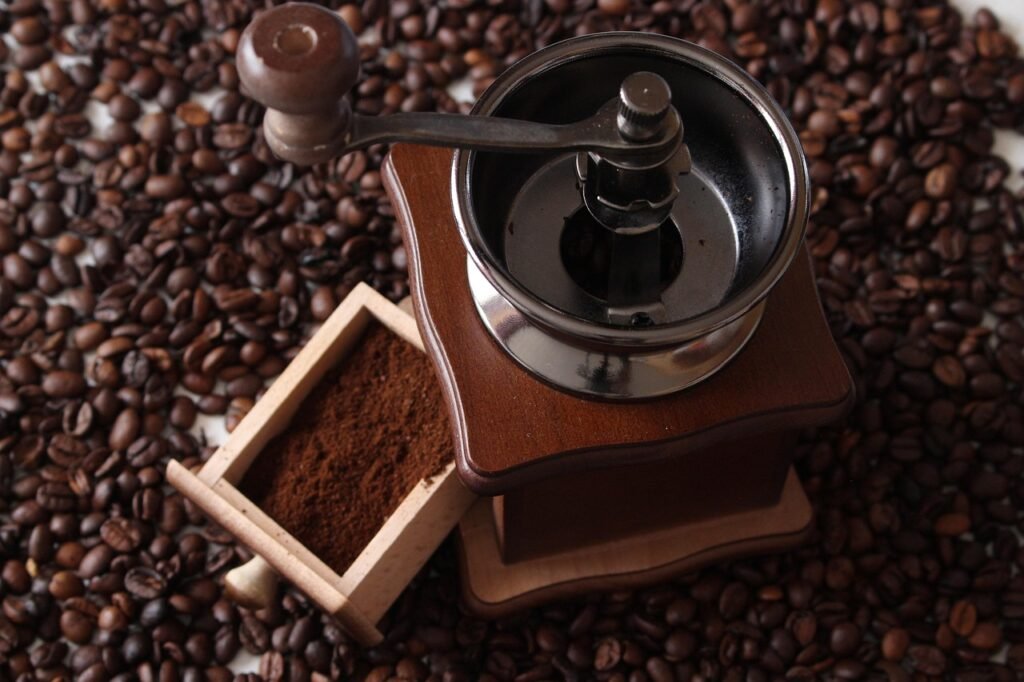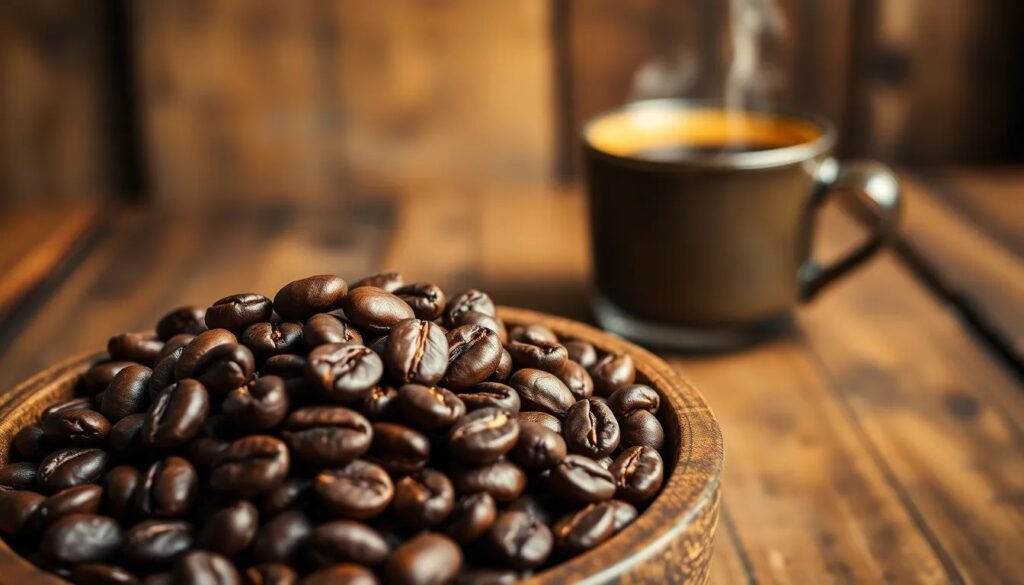
Artisanal Rituals for a Memorable Customer Experience
How can brands create a more balanced and memorable customer experience by blending artisanal product quality with thoughtful everyday rituals that keep people coming back?

TL;DR:
Ever wondered if those aromatic, little coffee beans you grind each morning could be more than just your cup of joe? Surprisingly, coffee beans are indeed edible, and they offer a unique crunch along with a burst of flavor. While munching on roasted beans isn’t common, it raises the question: what about raw, green, unroasted coffee beans? This article explores the safety, flavors, and surprising benefits of eating coffee beans, providing you with everything you need to know about these intriguing seeds before taking a bite.
Yes, coffee beans are safe to eat, but chewing roasted beans isn’t common. Many enjoy the crunch and flavor of roasted beans, though it’s not widespread. Consuming coffee beans delivers a concentrated dose of caffeine, so monitoring intake is essential to avoid potential side effects.
Raw, green, unroasted coffee beans are edible but not very tasty and can be hard on dental fillings due to their toughness. They have a bitter, woody taste, making them less appealing than their roasted counterparts. Roasted beans are more flavorful and easier to chew, offering different taste profiles depending on the roast level. Light roasts tend to be bright and fruity, while dark roasts have a rich, caramel sweetness.
Coffee beans are the seeds of the coffee cherry, which turns ruby red when ripe. These cherries are harvested and processed to remove the mucilage layer surrounding the beans. Afterward, the beans are dried and roasted to develop their flavors. This post-harvest process is crucial in transforming raw beans into the aromatic, flavorful roasted beans loved by coffee enthusiasts.
Eating coffee beans offers various health benefits beyond the energy boost provided by caffeine. Coffee beans are packed with dietary fiber, essential nutrients, and antioxidants, making them a great addition to your diet.
![Coffee beans in cup [Are coffee beans edible?]](https://equipoisecoffee.com/wp-content/uploads/2024/09/coffee-1576552_1280-1-1024x682.jpg)
Antioxidants in coffee beans help reduce inflammation and lower the risk of cardiovascular conditions. Antioxidants fight free radicals in your body, which cause cellular damage and contribute to chronic diseases. Because coffee beans are a rich source of antioxidants, consuming them can improve your immune system and reduce the risk of certain diseases. For instance, chlorogenic acid, a potent antioxidant found in coffee beans, supports heart health and regulates blood sugar levels.
Additionally, coffee beans may aid in weight loss. The caffeine content can boost metabolism and increase fat oxidation. While chocolate-covered coffee beans are high in calories, plain coffee beans can be a low-calorie snack that supports fat burning. Caffeine enhances physical performance and promotes fat loss, but consume in moderation to avoid side effects from excessive caffeine intake.
Eating coffee beans delivers a more potent dose of caffeine compared to drinking coffee. For example, consuming a handful of beans can pack the same caffeine punch as a couple of cups of brewed coffee. This quick energy boost also means a higher risk of caffeine-related side effects. Excessive caffeine intake may lead to jitteriness, anxiety, and palpitations. Monitoring the number of beans consumed is crucial, especially if you’re sensitive to caffeine.
Digestive issues are another concern. High concentrations of caffeine and other compounds can irritate the stomach lining, leading to heartburn, acid reflux, and stomach cramps. The hard texture of raw, unroasted coffee beans can also be tough for the digestive system, causing discomfort and bloating. Consuming roasted beans, which are easier to chew and digest, can minimize these risks.
Apart from digestive issues, other risks include insomnia and an increased heart rate. High caffeine content can disrupt sleep and lead to difficulty falling asleep or staying asleep. This is especially problematic if beans are consumed later in the day. Caffeine is a stimulant that can raise heart rate and blood pressure, posing a risk for individuals with cardiovascular conditions. Moderation helps avoid adverse effects, ensuring the benefits of eating coffee beans without compromising health.

One chocolate-covered coffee bean contains around 12mg of caffeine. This makes coffee beans a potent source of caffeine. The caffeine content per bean can vary slightly based on size, type, and preparation method.
Consuming coffee beans delivers more caffeine than brewed coffee because the beans are more concentrated. A single coffee bean typically contains about 6mg of caffeine, and eating multiple beans can quickly add up. An average cup of brewed coffee contains about 95mg of caffeine, derived from multiple beans. Eating coffee beans provides a more direct and potent caffeine intake, leading to a quicker energy boost but also a higher risk of overconsumption.
4 Points Discussing Caffeine Content in Different Types of Coffee Beans:
Beyond caffeine, coffee beans offer dietary fiber benefits. Thirty coffee beans contain about 10% of the recommended daily fiber intake, making them a good snack for increasing fiber intake while enjoying a caffeine boost. Fiber aids in regular bowel movements and reduces the risk of gastrointestinal conditions.
| Aspect | Raw Coffee Beans | Roasted Coffee Beans |
|---|---|---|
| Taste | Bitter, wood-like flavor | Bright and fruity (light roast) |
| Rich, caramel sweetness (dark roast) | ||
| Texture | Hard and tough to chew | Easier to chew |
| Nutritional Value | High chlorogenic acids (antioxidants) | Reduced chlorogenic acids, enhanced melanoidins |
Roasted coffee beans are more flavorful and easier to chew. They can be enjoyed alone as a crunchy snack, offering flavor with each bite. Many grind roasted beans and sprinkle them over yogurt, oatmeal, or salads for added crunch and a caffeine boost. Roasted coffee beans can also be blended into smoothies, providing texture and a subtle coffee flavor. These versatile methods make roasted coffee beans popular for incorporating into your diet.
Homemade chocolate-coated coffee beans are another delightful way to enjoy coffee beans. These treats combine the rich taste of chocolate with the robust flavor of coffee, making for a delicious and high-energy snack. The caffeine content from both coffee and chocolate provides a quick pick-me-up, making them great for a mid-day energy boost. Chocolate-coated coffee beans also pair well with specialty coffee drinks, adding complementary flavors.
Eating coffee beans is an effective way to get a quick energy boost. The concentrated dose of caffeine can enhance alertness and improve physical performance, making them an ideal snack for athletes or anyone needing rapid energy. The added fiber contributes to improved digestive health. Incorporating coffee beans into your diet as a high-energy snack offers both immediate and long-term benefits.

Eating coffee beans provides a potent and concentrated caffeine dose. This can pose risks if consumed excessively. High caffeine levels may lead to insomnia, digestive issues, and an increased heart rate. A handful of coffee beans can contain the same amount of caffeine as multiple cups of brewed coffee, resulting in jitteriness, anxiety, and palpitations for those sensitive to caffeine. Monitoring consumption is crucial to avoid these adverse effects.
Moderate consumption offers several benefits without significant risks. Thirty coffee beans provide about 10% of the recommended daily fiber intake, aiding digestion and supporting overall gut health. Moderate caffeine intake can enhance alertness and physical performance, making coffee beans a convenient and effective energy-boosting snack.
4 Guidelines for Safe Coffee Bean Consumption:
Raw coffee beans are edible but not commonly consumed due to their bitter, wood-like flavor and hard texture. Chewing raw beans can be challenging and may risk dental fillings. The bitterness and toughness make them less appealing, though they are sometimes used in health supplements for their high antioxidant content.
Roasted coffee beans are more flavorful and easier to chew. The roasting process transforms the beans, developing various taste profiles depending on the roast level. Light roast beans offer a bright and fruity flavor, while dark roast beans provide a rich, caramel sweetness. Roasted beans are enjoyed as snacks, in chocolate-covered forms, or ground and sprinkled over foods for added crunch and flavor.
The nutritional value of raw versus roasted coffee beans also varies. Raw beans are rich in chlorogenic acids, which have antioxidant properties. However, roasting reduces these acids while enhancing other beneficial compounds like melanoidins. Roasted beans still retain significant antioxidant properties, but the composition changes, potentially making roasted beans easier to digest and more palatable.
Exploring the edibility of coffee beans, raw and roasted forms offer unique experiences. While raw beans are hard and less flavorful, roasted beans are more palatable and easier to consume. The health benefits include antioxidants and potential weight loss. Nevertheless, the higher caffeine concentration in coffee beans necessitates mindful consumption due to possible side effects.
Balanced consumption allows coffee enthusiasts to enjoy the benefits while mitigating risks. The quest for the perfect coffee balance continues, offering a rich and rewarding experience for all coffee lovers.
Coffee beans are safe to eat, though chewing roasted beans is uncommon. Raw, green, unroasted coffee beans are hard, not flavorful, and can risk dental fillings. Coffee beans are seeds of the coffee cherry, which turn ruby red when ripe.
Consuming coffee beans delivers more caffeine than drinking coffee as they are more concentrated. Excessive intake may lead to insomnia, digestive issues, and increased heart rate. Raw beans also pose a risk to dental fillings.
Yes, especially when chewing raw beans. Unroasted coffee beans are hard and can damage teeth or dislodge fillings. Roasted beans are softer but still should be consumed in moderation to avoid potential dental issues.
The advisable limit is around 20-30 beans per day, depending on caffeine tolerance. This amount provides a caffeine boost without excessive intake leading to side effects like insomnia or digestive discomfort.
Yes, humans can eat raw coffee beans, but they are tough, bitter, and might damage dental fillings. Roasted beans are a preferable edible option due to better flavor and ease of chewing.

How can brands create a more balanced and memorable customer experience by blending artisanal product quality with thoughtful everyday rituals that keep people coming back?

Independent coffee shops have always been about more than caffeine—they’re hubs of creativity, connection, and care. As café culture continues to evolve, new trends are

Introduction Independent cafes win when they feel like the neighborhood’s living room and operate with the discipline of a great kitchen. Below is a quick

Discover how top specialty coffee brands create lasting loyalty through storytelling, sourcing, and community connection. Real tips from 6 industry experts.

Discover the ultimate showdown between two beloved coffee brewing methods: the French press and Chemex. Explore how each technique caters to distinct palates, with the French press delivering bold flavors and the Chemex presenting a bright, clean taste.

Unlock the secrets to brewing the perfect cup of coffee with our comprehensive guide on using a coffee scale. Discover how precise measurements enhance flavor and consistency while eliminating bitterness.

Discover how water temperature plays a vital role in brewing the perfect cup of coffee. This article delves into the ideal temperature range of 195°F to 205°F for optimal flavor extraction, enhancing the enjoyment of high-quality beans.

Discover the world of curated specialty coffee bundles, perfect for enthusiasts seeking quality and craftsmanship. This article explores the benefits of ethically sourced, small-batch beans from brands like Equipoise Coffee, offering diverse flavor profiles that elevate your brewing experience.

Discover the art of manual brewing to elevate your coffee experience! This article explores various techniques like pour-over, French press, and AeroPress, revealing how they enhance flavor and your connection to every cup.